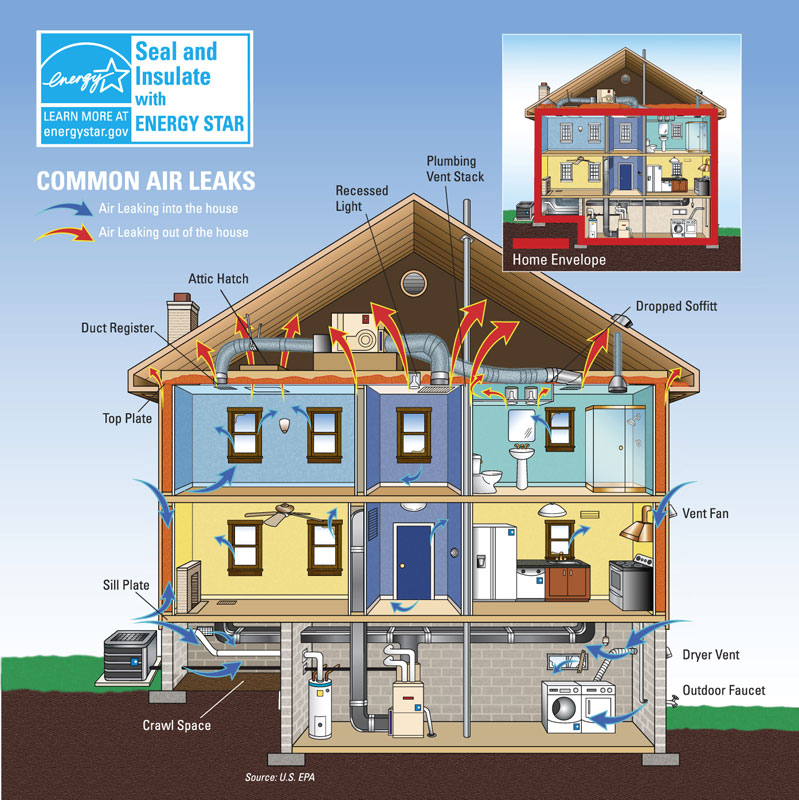July 27, 2020 | Posted In: BHP Education Articles
Overview
Air sealing is one of the most cost-effective steps you can take to increase comfort and reduce energy consumption and utility bills. Air sealing refers to blocking leaks in a home or business that allow conditioned air (inside air) out and unconditioned (outside air) in. The more this is controlled, the less energy it will take to maintain the temperature, humidity, and comfort in a conditioned space. Air sealing can be done yourself or by a qualified contractor, using silicone or latex caulk and expanding foam.
The first step is detecting air leaks. A simple, DIY way to do this is to turn on all exhaust fans such as bathroom and kitchen stove fans. Close all windows and doors, and use a lit candle, lit match, or lit incense stick, passing it around the edges of common leakage sites such as window and door frames. The smoke or flame will waver when met with air leaks. You can also use a damp hand to locate leaks; any drafts will feel cool to your hand. A professional energy auditor can also perform a blower door test, where a building is depressurized to make air leakage more obvious. The energy auditor can then easily identify air leaks using a smoke stick.
The top places to focus on when air sealing are:
- Exterior door frames
- Window frames
- Wall outlets and switches
- Attic entrance/attic hatch
- All ducts
- Plumbing, fuel, or electrical penetrations throughout the home
- Sill plates
- Outdoor water spigots
- Recessed lights
- Cracks and seams in the ceiling

Air Sealing Supports a Clean Energy Future
Air sealing your home or business reduces the loss of conditioned air, which you are paying to condition. This saves money and energy. When we all take action to reduce our energy use, it adds up. Every bit of energy we don’t use is less we have to pay for and less natural gas burned at Duke Energy’s Lake Julian natural gas plant. Air sealing can save an estimated 15% on your heating and cooling costs.
Rebates and Incentives
- $250 from Duke Energy to have a participating contractor air seal and insulate your attic; $100 for duct sealing: https://www.duke-energy.com/home/products/smart-saver/insulate-and-seal
Local Installers and Resources
Links and Videos with More Information
For more detailed information on this technology, we recommend visiting
- DOE – Air Sealing Your Home Page
- DOE – Detecting Air Leaks
- The Spruce – How to Air Seal Your Home
- DOE – Weatherstripping
Videos:
